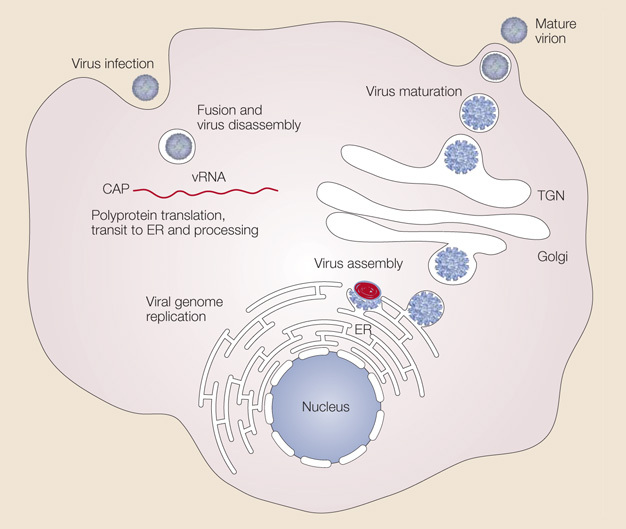Dengue virus replication
Keywords
Flag Inappropriate
Delete Content

Dengue virus replication
The dengue virus attaches to the surface of a host cell and enters the cell by a process called endocytosis. Once deep inside the cell, the virus fuses with the endosomal membrane and is released into the cytoplasm. The virus particle comes apart, releasing the viral genome. The viral RNA (vRNA) is translated into a single polypeptide that is cut into ten proteins, and the viral genome is replicated. Virus assembly occurs on the surface of the endoplasmic reticulum (ER) when the structural proteins and newly synthesized RNA bud out from the ER. The immature viral particles are transported through the trans-Golgi network (TGN), where they mature and convert to their infectious form. The mature viruses are then released from the cell and can go on to infect other cells.
This image is linked to the following Scitable pages:
Like other viruses, the dengue virus is a microscopic structure that can only replicate inside a host organism. The four closely related dengue viruses — DEN-1, DEN-2, DEN-3, and DEN-4 — are found in the same regions of the world. The dengue virus has a roughly spherical structure. It is composed of the viral genome and capsid proteins surrounded by an envelope and a shell of proteins. After infecting a host cell, the dengue virus hijacks the host cell's machinery to replicate the viral RNA genome and viral proteins. Newly synthesized dengue viruses can go on to infect other host cells.





















Comments
CloseComments
Please Post Your Comment